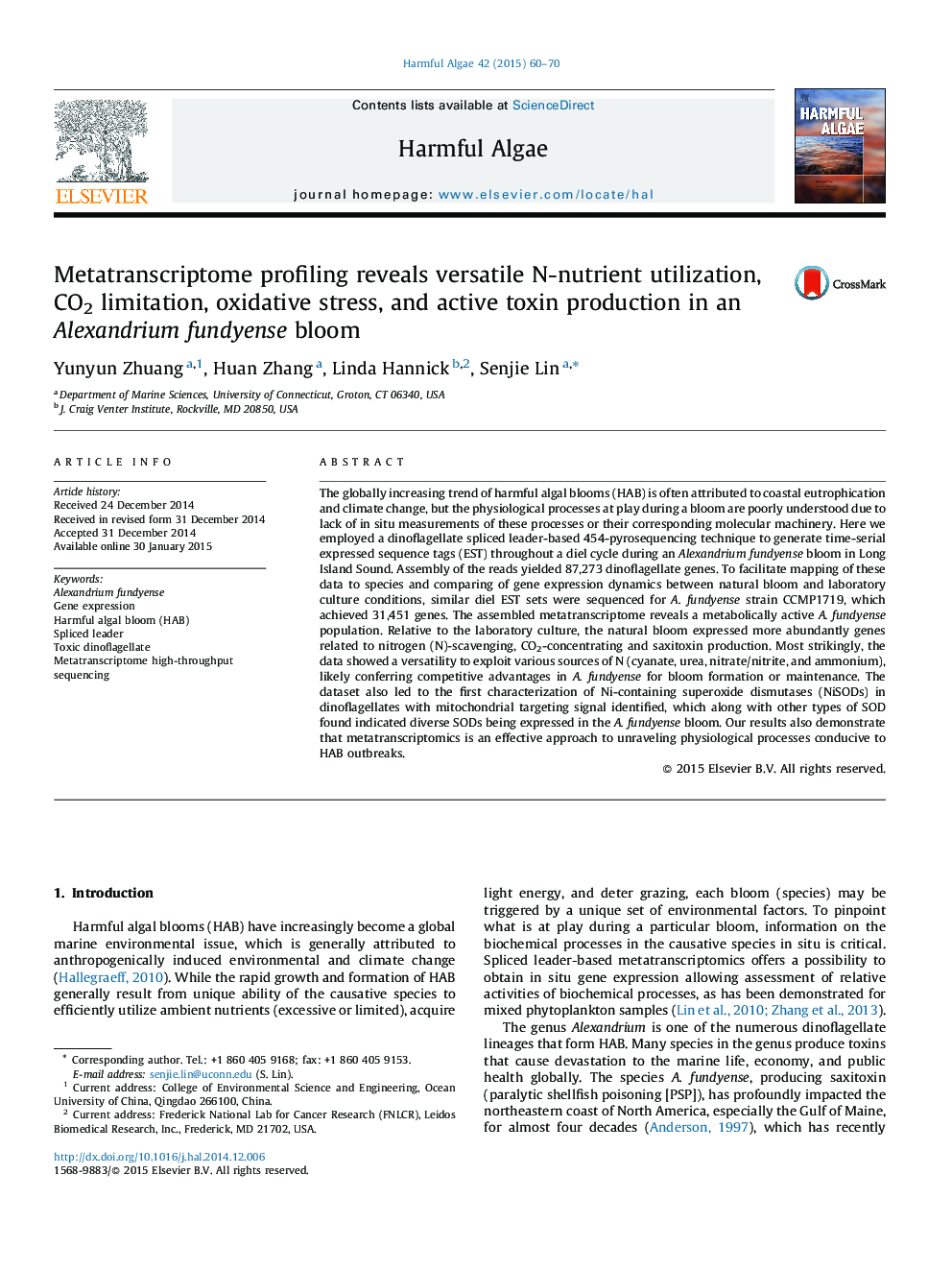| Article ID | Journal | Published Year | Pages | File Type |
|---|---|---|---|---|
| 4545208 | Harmful Algae | 2015 | 11 Pages |
•We studied a Alexandrium fundyense bloom using DinoSL-based 454 technique.•The metatranscriptome reveals a metabolically active A. fundyense population.•Genes for N-scavenging, CO2-concentrating and saxitoxin production were upregulated in bloom.•A. fundyense may experience N-, CO2-limitation and oxidative stress during the bloom.•Nickel superoxide dismutase of A. fundyense contained mitochondrion-targeting signal.
The globally increasing trend of harmful algal blooms (HAB) is often attributed to coastal eutrophication and climate change, but the physiological processes at play during a bloom are poorly understood due to lack of in situ measurements of these processes or their corresponding molecular machinery. Here we employed a dinoflagellate spliced leader-based 454-pyrosequencing technique to generate time-serial expressed sequence tags (EST) throughout a diel cycle during an Alexandrium fundyense bloom in Long Island Sound. Assembly of the reads yielded 87,273 dinoflagellate genes. To facilitate mapping of these data to species and comparing of gene expression dynamics between natural bloom and laboratory culture conditions, similar diel EST sets were sequenced for A. fundyense strain CCMP1719, which achieved 31,451 genes. The assembled metatranscriptome reveals a metabolically active A. fundyense population. Relative to the laboratory culture, the natural bloom expressed more abundantly genes related to nitrogen (N)-scavenging, CO2-concentrating and saxitoxin production. Most strikingly, the data showed a versatility to exploit various sources of N (cyanate, urea, nitrate/nitrite, and ammonium), likely conferring competitive advantages in A. fundyense for bloom formation or maintenance. The dataset also led to the first characterization of Ni-containing superoxide dismutases (NiSODs) in dinoflagellates with mitochondrial targeting signal identified, which along with other types of SOD found indicated diverse SODs being expressed in the A. fundyense bloom. Our results also demonstrate that metatranscriptomics is an effective approach to unraveling physiological processes conducive to HAB outbreaks.
